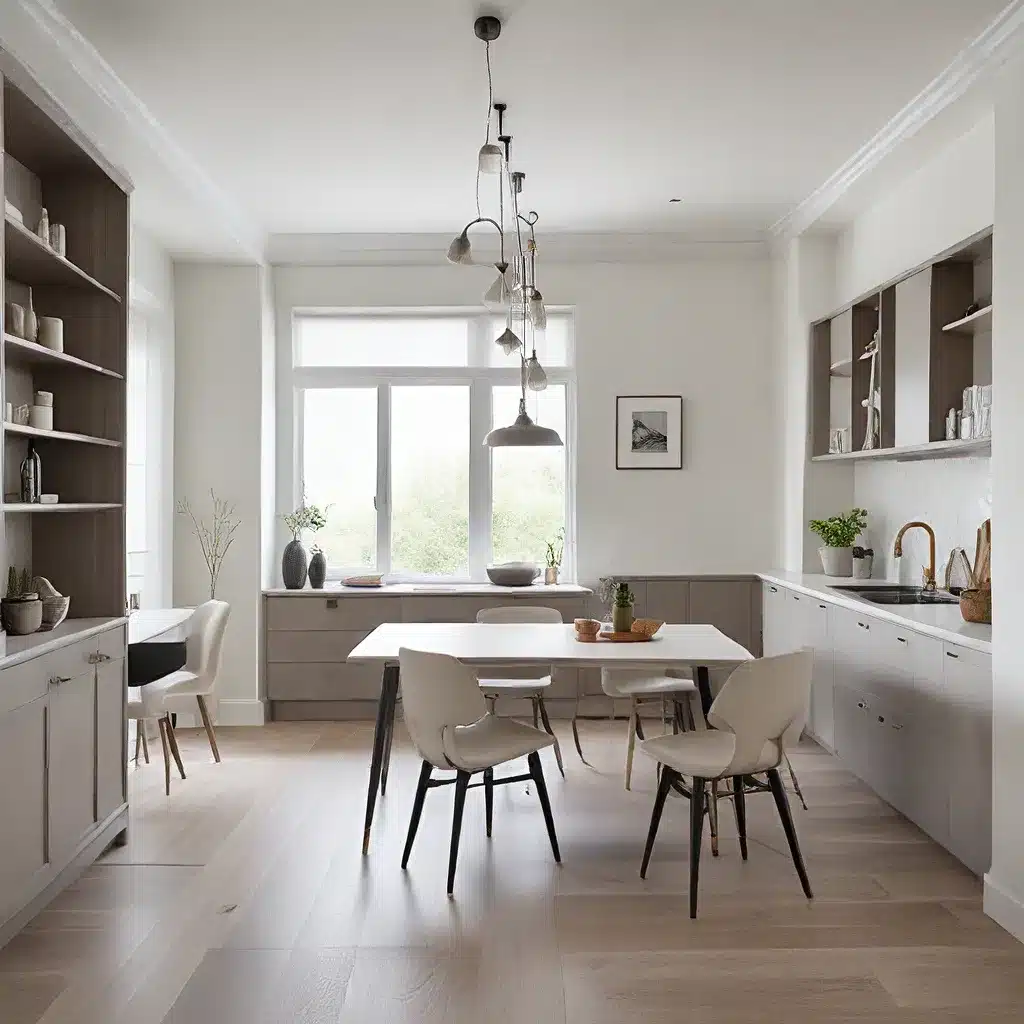
In the world of interior design, the age-old debate of form over function has long been a topic of discussion. While some may argue that aesthetics should take precedence, the reality is that functional interiors should always be the primary focus when creating comfortable and practical living spaces. By striking a harmonious balance between form and function, designers can craft inviting environments that cater to the specific needs of their clients while also showcasing their creative vision.
Prioritizing Function: The Cornerstone of Successful Design
At the heart of any well-designed interior lies a deep understanding of user-centered design and ergonomic principles. Designers must consider how occupants will interact with their surroundings, ensuring that spaces are not only visually appealing but also highly efficient and comfortable to inhabit. This delicate balance between ergonomic design and utilitarian design is essential for creating interiors that truly resonate with their residents.
As experts in the field suggest, the key to achieving this balance lies in carefully considering factors such as furniture placement, material selection, and color harmony. By strategically arranging elements within a room, designers can foster natural flow and connection, guiding the eye and creating a sense of cohesion that enhances the overall user experience.
Harmonizing Aesthetics and Functionality
While form over function may be a common mantra, the reality is that form equals function when done right. Designers must approach each project with a deep understanding of how these two elements work in harmony to create spaces that are not only visually stunning but also highly practical.
Plastic injection molding, for example, has become a game-changer in the automotive industry, allowing for the production of intricate and durable components that seamlessly integrate into vehicle interiors. This technology enables manufacturers to create dashboard assemblies, door panels, and seat components that are not only aesthetically pleasing but also highly functional, delivering a comfortable and safe driving experience for both the driver and passengers.
When it comes to selecting colors and textures for a space, designers must consider not only their aesthetic appeal but also their practical applications. As trends in the industry suggest, choosing materials that are both visually appealing and durable can create an inviting atmosphere that stands the test of time. By striking this balance, designers can ensure that their clients’ homes or workspaces are not only beautiful but also practical and long-lasting.
Incorporating Technology for Seamless Functionality
In the ever-evolving landscape of interior design, technology has become an increasingly important factor in creating functional and efficient spaces. From smart materials like self-cleaning glass to digitally-connected lighting and security systems, designers can now integrate cutting-edge solutions that enhance the user experience without compromising the overall aesthetic.
By understanding how people interact with their environment and incorporating technology that improves comfort, convenience, and safety, designers can craft truly unique and personalized spaces that cater to their clients’ specific needs. This approach allows for the maximization of functionality while maintaining attractive aesthetics, ensuring that every room is not only visually appealing but also highly livable and enjoyable.
Prioritizing Ergonomics for Enhanced User Experience
At the heart of any well-designed interior lies a deep understanding of ergonomics – the study of how people interact with their physical environment. By carefully considering factors such as furniture placement, lighting, and overall spatial organization, designers can create spaces that are not only aesthetically pleasing but also highly conducive to productivity, relaxation, and overall well-being.
When designing functional interiors, it’s essential to prioritize the user’s needs and preferences, ensuring that every element of the space is tailored to their specific requirements. This may involve incorporating multi-purpose furniture, strategic lighting solutions, and even customizable storage systems to optimize the use of available space while maintaining a cohesive and visually appealing aesthetic.
By striking a delicate balance between form and function, designers can create interiors that not only look beautiful but also enhance the overall quality of life for their clients. Whether it’s a cozy living room, a productive home office, or a luxurious master suite, the key to success lies in understanding how people inhabit and interact with their environments.
Embracing Creativity within the Functional Framework
Many may assume that creativity and functionality are mutually exclusive, but in reality, the two can – and should – work hand-in-hand when designing interiors. By embracing the principles of form follows function, designers can unleash their artistic flair while ensuring that every element of the space serves a practical purpose.
This may involve experimenting with bold colors, textures, and patterns to create dynamic and visually engaging environments, or incorporating nature-inspired elements like plants and organic materials to foster a sense of balance and harmony. The goal is to strike a perfect equilibrium between aesthetics and practicality, crafting spaces that not only look stunning but also feel comfortable and inviting.
Measuring Success: Balancing Beauty and Durability
Ultimately, the true measure of success in interior design lies in the harmonious integration of form and function. It’s not enough for a space to simply look beautiful; it must also be practical, comfortable, and adaptable to the needs of its inhabitants. By carefully selecting high-quality materials, paying close attention to ergonomics, and incorporating innovative technological solutions, designers can create interiors that stand the test of time while also leaving a lasting impression on those who experience them.
As you embark on your own design journey, remember that form equals function – and by embracing this principle, you can craft spaces that are not only visually stunning but also truly functional and life-enhancing for your clients. With a keen eye for detail, a deep understanding of user needs, and a willingness to push the boundaries of creativity, you can transform any space into a masterpiece of functional finesse.

